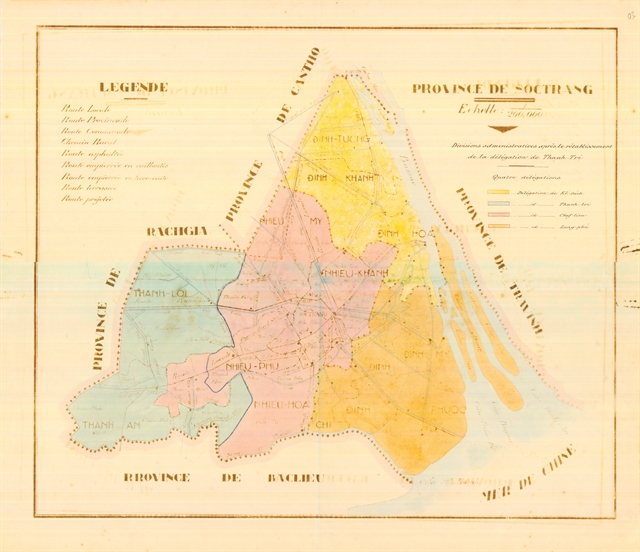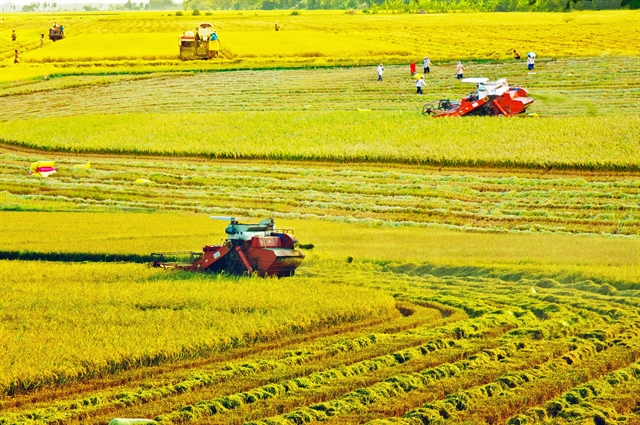
Map of Sóc Trăng Province in 1943 . — Photo courtesy of the organiser
SÓC TRĂNG — More than 250 rare and precious photos and documents on the formation and development of the Cửu Long (Mekong) Delta province of Sóc Trăng from the 18th century to today are featured in a new exhibition.
The exhibition Sóc Trăng – Xưa và Nay (Sóc Trăng Province – Past and Present) is co-organised by the National Archives of Việt Nam under the Ministry of Home Affairs, and the province’s Ok Om Bok Festival, also called Festival of Worshipping the Moon.
The showcase is divided into three parts: Sóc Trăng – Vùng đất và Con người (Land and People of Sóc Trăng), Sóc Trăng trong hai cuộc kháng chiến trường kỳ của dân tộc (Sóc Trăng in Two Revolutionary Wars), and Sóc Trăng trong quá trình xây dựng và phát triển (Sóc Trăng in the Cause of Building and Development).
The first half includes maps, administrative documents and royal technical documents on the formation of the province, which was known as Ba Xuyên City under Nguyễn Dynasty in the 18th century.
The area was named Sóc Trăng Province in the 19th century.
The exhibits include administrative documents on the formation of Ba Xuyên City, as well as photos on the lifestyle and educational and cultural activities of people in the 18th and 19th centuries.
The province was re-named Ba Xuyên from 1954 to 1975, and then officially named Sóc Trăng in 1991.
The second part include documentary photos on soldiers and residents of the province during the two resistance wars from 1858-1975 that liberated the country.
The remaining exhibits reflect images of Sóc Trăng’s people who have contributed to developing the province.

Mùa Vàng Trên Quê Hương Sóc Trăng (Golden Harvest in Sóc Trăng), a photo by Đoàn Văn Ân. — Photo courtesy of the organiser
Photos featuring images of the province’s achievements in economy, society, health and culture, and tourism, as well as the harmony life of the Kinh, the Khmer and the Chinese in the province.
All of the documents and images are from the National Archives of Việt Nam’s Centre No 2 and the Museum of Sóc Trăng.
The exhibition, which is open to the public at Bạch Đằng Park in Sóc Trăng City, ends on November 15. — VNS